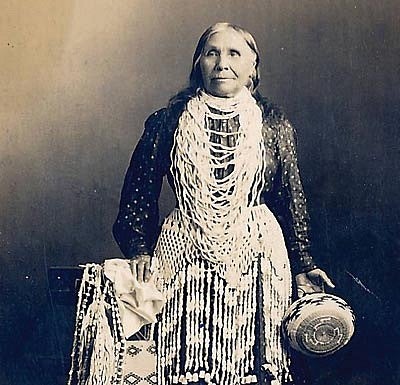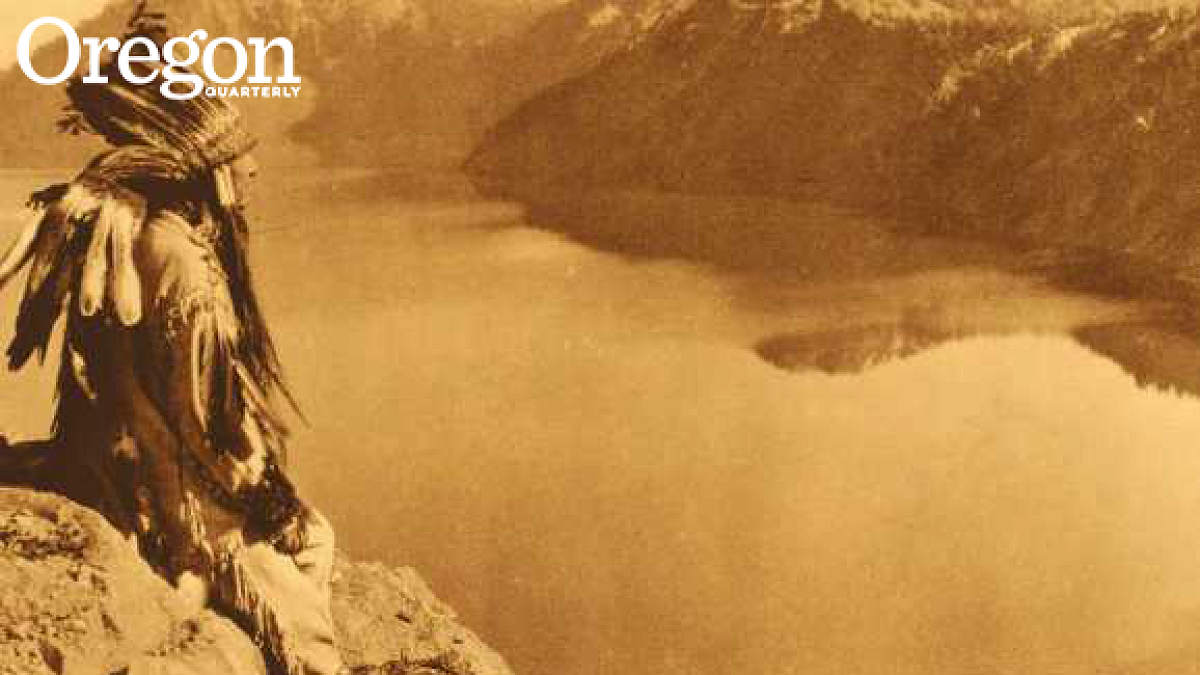Destruction and horror on an unimaginable scale lashed the people of Oregon in a series of epidemics beginning 500 years ago. Details of the devastation are described in this excerpt from The People Are Dancing Again: The History of the Siletz Tribe of Western Oregon (University of Washington Press, 2010) by Charles Wilkinson. Currently at the University of Colorado Law School, he previously served on the law faculty at the UO, where he received the university-wide Ersted Award for Distinguished Teaching. He was honored at a reception on campus in April.
The first blow hit Indian people before they even saw the faces of the intruders. The killing germs may have invaded Oregon as early as the 1520s. The spark, set off by an arriving Spanish seaman infected with smallpox, ignited in what is now the Dominican Republic. The disease spread like wildfire, to the mainland, then up the East Coast, into the Midwest, out to the Great Plains. All of that is documented. What is not finally known is whether the smallpox moved beyond the Rocky Mountains. Some researchers believe that it did, while others consider the evidence incomplete.
But there is no question that European diseases ravaged Oregon by the 1770s. Smallpox epidemics came first, but the helpless people of the Siletz tribes who lacked immunity to the foreign germs also were infected by measles, malaria, gonorrhea, typhoid, tuberculosis, and other diseases. The attacks were relentless, hitting Oregon tribes at least every decade from the 1770s through the 1850s and beyond.

Where did the affliction come from? When did it start? The most likely culprit is a crew member infected with smallpox on the 1775 voyage of two Spanish ships, the Santiago and the Sonora, captained by Bruno Hezeta and Juan Francisco de la Bodega. The explorers met with Indians at the mouth of the Trinidad River 225 miles to the south of Yaquina Bay, and at the Quinault River, nearly that far to the north. The Trinidad encounter is especially suspect because a large Tolowa village—with close social relations to the Tututni and other Athapaskan tribes of southern Oregon—was depopulated at about this time, probably from a smallpox attack. The disease easily could have moved north from there. But wherever the source of this first reported incident—and some scholars have speculated about even more distant origins—smallpox is a speedy, long-distance traveler that comes invisibly, in the dark of night, and then it is too late to react.
At first, Indian people were mystified by the invader. Amelia Brown, a Tolowa, recounted: “Old timers said that the sickness came from the south—it just came by itself.”
* * *
Suffering swept over the tribes. Coquelle Thompson of the Coquille solemnly explained the dread. “They were afraid to call it by name. They spoke of ‘That kind of sickness.’ One little spot and a person would die. It was just like cutting brush . . . Men, women, children—all go . . . No one could cure for that kind of sickness. They were afraid, you know. Terribly.” Daloose Jackson (Coos) thought he heard cries from the old people buried in the graveyard. He knew the cries were a warning: “Oh, the smallpox is going to go through again.” A federal agent taking a census on the southern Oregon Coast found that the death toll of smallpox and measles epidemics in the Chetco and Rogue watersheds was so great that “many of their once populous villages are now left without a representative.” Of the Clatsop and Chinook tribes at the mouth of the Columbia, Meriwether Lewis wrote in his journal on February 6, 1806, that
the smallpox has distroyed a great number of the natives in this quarter, It prevailed about 4 years since among the Clatsops and destroy[ed] several hundred of them, four of their chiefs fell victyms to it’s ravages. . . I think the late ravages of the small pox may well account for the number of remains of villages which we find deserted on the river and Sea coast in this quarter.
Deeply ingrained tribal customs aggravated the effects of the unfamiliar diseases. When a person took ill, it was a tradition for medicine men, family, and others to gather around and give support. This hastened the spread of the viruses. The sweat houses, places of healing in precontact times, also contributed. The heat of the sweat, and especially the subsequent plunge into a river or the ocean, could seal the fate of the victim.
Terrible though the smallpox epidemics of the late 1700s and early 1800s were, the “fever and ague” crisis of the 1830s may have been worse. Robert Boyd calls this outbreak of malaria “the single most important epidemiological event in the recorded history of what would eventually become the state of Oregon.” The devastation started at Fort Vancouver and spread to the mouth of the Columbia, moved upriver a hundred miles, and raged through the Willamette and Upper Rogue valleys and into northern California. Chinooks and Clatsops were among the first to suffer:
During its worst years, the few surviving natives of the lower river could no longer bury their numerous dead in their usual manner. Corpses, denied canoe interment, piled up along the shores to fatten carrion eaters, and famished dogs wailed pitifully for their dead masters. Surviving natives dared not remove or care for the bodies as they normally so meticulously did. Nor dared they molest markers in the river in fear of more fever. Natives burned their villages attempting to destroy the contamination. For years skeletons of victims would bleach on gaunt and dreary shorelines like so many pieces of driftwood.
While Indians made up most of the dead, whites also were infected. Ezra Hamilton, an early settler who survived, left this account of the epidemic’s torment:
[Of] the fever and ague, intermitent feavor and other malarial diseases, The fever and ague was the worst and acted pecular. I was struck with it seven Sundays in succession. Would not have it durig the week. The act at work kep it of[f]. I have had shakes that lasted 2 ours, fevor two ours. It was no chill, but a geneuine shake. Seamed I would freeze. All the covers you might put on would not keep you warm. I used to rape [wrap] the covers around my feet and take the corners in my mouth. When got through shakig I found I had chewed the corners of the blankets. The fever and ague was about 4 feet deep all over that country!
The “fever and ague” cut deeply into Willamette Valley tribes, the once populous Kalapuya and Molala tribes, until they were all but extinguished, fragments of their former selves. Farther south, the Takelma and Shasta lost many people. All tribes endured serial attacks, as numerous other epidemics of smallpox and other diseases were close behind.
With most of their people gone—nearly every tribe lost more than 80 percent, with the more remote south coast Athapaskans losing about two-thirds—one wonders how the survivors could cope. Who among us today can fully comprehend losing nearly the whole population of our own town or city? Most of our family and friends?


